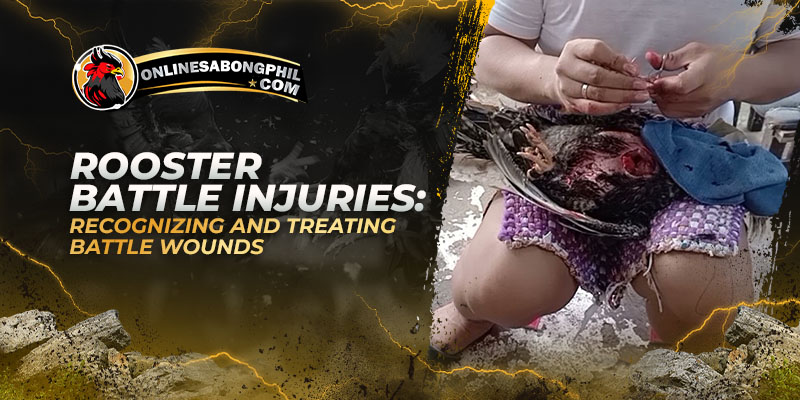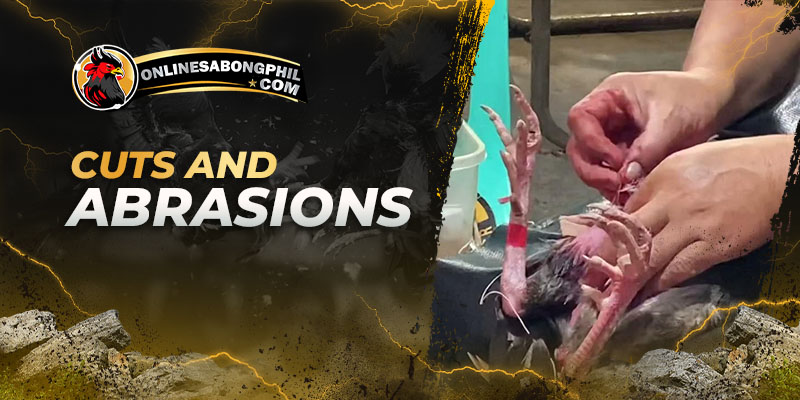Roosters, by nature, are territorial and possess a strong instinct to compete. In some parts of the world, this translates into the controversial practice of cockfighting, where roosters are pitted against each other in violent encounters. While this practice is illegal in many places due to its cruelty, rooster battles can also occur naturally among birds in a flock. Regardless of the cause, these battles can inflict serious injuries on the roosters involved.
This article will explore the common injuries sustained during rooster battles and provide information on how to identify and address them.
Broken Bones
The most common injuries in rooster fights are broken bones. These fractures can occur in various places, including the legs, wings, and beak. Severe fractures may cause deformity or even limit the bird’s ability to walk or fly.
Cuts and Abrasions
Roosters’ sharp spurs and beaks can inflict significant cuts and abrasions during fights. These injuries can bleed heavily and become infected if not treated promptly.
Eye Injuries
A rooster’s eyes are particularly vulnerable during a fight. Punctures, scratches, and even complete blindness can occur due to pecking and sharp blows.
Respiratory Problems
The stress and exertion of a fight can take a toll on a rooster’s respiratory system. Signs of breathing problems include labored breathing, gasping, and an open beak. Internal injuries like punctured lungs can also occur.
Sprains and Strains
The twisting and turning that occurs during a fight can cause sprains and strains in the muscles, tendons, and ligaments. These injuries can result in pain, edema, and trouble moving.
Signs and Symptoms of Injury
If you suspect your rooster has been in a fight, it’s crucial to be aware of the signs and symptoms of injury. These include:
- Walking Wobbly: Is your rooster limping or having trouble putting weight on a leg? This could be a broken bone or a sore muscle.
- Droopy Wings: Healthy roosters hold their wings nice and close to their bodies. Drooping wings can mean pain or injury.
- Picky Eater: Roosters who aren’t feeling well often lose their appetite. If your rooster isn’t interested in his food, something might be wrong.
- Sleepyhead: Normally active roosters who suddenly become sluggish or withdrawn might be injured or sick.
- Puffy Parts: Keep an eye out for swelling on your rooster’s legs, wings, or around his beak. This could be a sign of a sprain, strain, or even a broken bone.
- Bloody Mess: Any bleeding, especially from the beak or eyes, needs immediate attention from a vet.
- Breathing Trouble: Is your rooster gasping for air or holding his beak open wide? This could be a sign of a respiratory problem caused by the fight.
- Gooey Eyes or Beak: Discharge from the eyes or beak can indicate an infection, which could be from a scratch or peck during the fight.
Treatment and Prevention
If you see any of the warning signs that your rooster might be hurt after a fight, take immediate action. Getting your rooster to a veterinarian as soon as possible is crucial for a full and speedy recovery. Early diagnosis allows the vet to intervene before any injuries worsen and prevents complications from setting in.
At the Vet
During the vet visit, be prepared to describe what happened and any signs you’ve noticed. The veterinarian will most likely conduct a comprehensive examination of your rooster, including looking for broken bones, screening wounds for infection, and listening to his heart and lungs for signs of respiratory issues. Depending on the severity of the injuries, the vet may recommend one or more of the following treatment options:
- Pain Medication: To help your rooster manage pain and discomfort, the vet may prescribe pain medication. This can be especially important for broken bones, sprains, and deep cuts.
- Antibiotics: If the vet identifies any signs of infection, antibiotics will be necessary to fight off bacteria and promote healing.
- Bandaging and Splinting: For fractured bones and sprains, bandaging or splinting may be required to immobilize the wounded area and allow it to recover properly.
- Surgery: In severe cases, such as a punctured lung or a badly broken bone, surgery may be necessary to repair the damage.
Home Care for Your Rooster
Once your rooster is home from the vet, it’s important to provide a quiet and stress-free environment for recovery. Here’s what you can do to help him heal:
- Separate Recovery Area: Set up a separate enclosure where your rooster can rest and recuperate without the company of other birds. This will minimize stress and prevent any further scuffles.
- Warmth and Comfort: Provide a warm, draft-free environment for your rooster. You can use a heating lamp or a warm, enclosed space to keep him comfortable.
- Cleanliness: Keep your rooster’s enclosure clean and dry to prevent further infection. Regularly change out any bedding and be mindful of hygiene, especially around any wounds.
- Easy Access to Food and Water: Make sure your rooster has easy access to fresh, clean water and a nutritious diet that will aid healing. You may need to adjust the food consistency if he has beak injuries that make eating difficult.
- Limited Activity: Depending on the injury, the vet may recommend restricting your rooster’s activity. This might involve keeping him in a smaller enclosure or even clipping his wings temporarily to prevent him from flying or injuring himself further.
- Medication Schedule: Follow the vet’s instructions carefully when administering any medication, including antibiotics and pain medication.
Preventing Rooster Battles
The best way to deal with rooster injuries is to prevent them from happening in the first place. Here are some tips for creating a peaceful environment for your flock:
- Ample Space: Provide your roosters with a spacious coop and run area. Crowding can lead to increased competition for resources and territory, which can trigger fights.
- Plenty of Resources: Ensure there are enough food and water sources throughout the coop and run to minimize competition. This includes having multiple feeders and waterers spaced out in different areas.
- Flock Management: If you have a large flock, consider separating particularly aggressive roosters or keeping a smaller number of roosters together.
- Enrichment Activities: Provide your roosters with things to keep them occupied and reduce boredom, which can contribute to aggression. This could include things like scratching posts, dust baths, or hanging objects for them to peck at.
By following these tips, you can create a safe and healthy environment for your roosters and minimize the risk of injuries from fights. Remember, prevention is always better than cure.
Conclusion
Rooster battles, whether intentional or not, can inflict serious injuries on these magnificent birds. By understanding the common injuries and their signs, you can be better equipped to identify and address them promptly. Remember, prevention is key. Ensuring a healthy and comfortable environment is crucial for the well-being of your roosters.
Visit us at Onlinesabongphil.com for more guides and tips!



